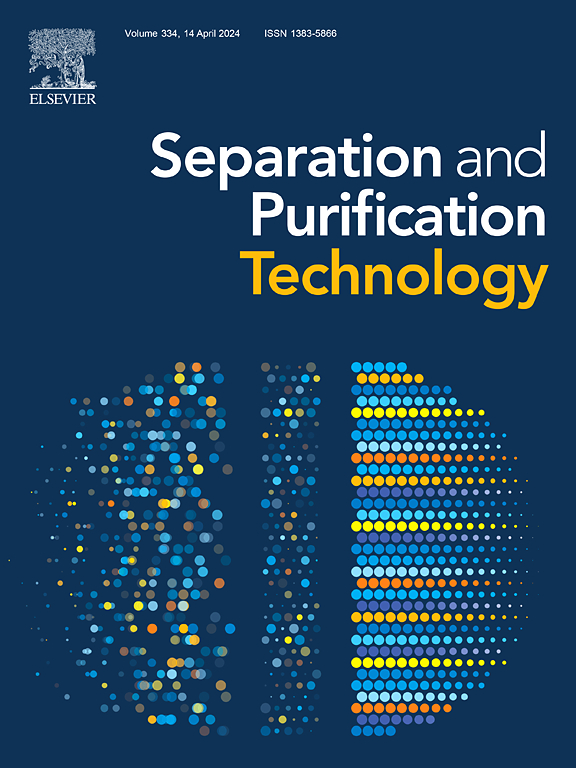Rational design of a small peptidomimetic ligand to capture a viral spike protein
IF 8.1
1区 工程技术
Q1 ENGINEERING, CHEMICAL
引用次数: 0
Abstract
The availability of purified antigenic proteins is critical to develop agents to prevent, diagnose, or treat infectious diseases. In this context, antigenic proteins are produced by recombinant expression in host cells and further purified, typically by chromatographic methods. Chromatographic steps that allow the one-step capture of the antigenic protein are important to streamline the purification train. Here, we present the design and development of an adsorbent bearing a synthetic affinity ligand to capture the SARS-CoV-2 spike protein, used as a model antigenic protein. A 120-ligand combinatorial library was designed in silico and then synthesised in solid phase, and both were computationally and experimentally screened for binding to the spike protein. One lead ligand was selected for yielding > 95 % binding, and 64–73 % recovery of original strain spike protein, its receptor-binding domain (RBD), and Omicron BA.5 variant spike protein. An enrichment factor of 15 was found when capturing the spike protein from a clarified supernatant sample. Complementary molecular dynamics simulations allowed a better understanding of the interactions between the lead ligand and the spike protein, which mainly consist of hydrophobic interactions, some hydrogen bonds and salt bridges formed with an important ligand carboxyl group. Overall, the methodology is a fast and efficient platform to develop affinity ligands for the purification of antigenic proteins in future pandemics.
求助全文
约1分钟内获得全文
求助全文
来源期刊

Separation and Purification Technology
工程技术-工程:化工
CiteScore
14.00
自引率
12.80%
发文量
2347
审稿时长
43 days
期刊介绍:
Separation and Purification Technology is a premier journal committed to sharing innovative methods for separation and purification in chemical and environmental engineering, encompassing both homogeneous solutions and heterogeneous mixtures. Our scope includes the separation and/or purification of liquids, vapors, and gases, as well as carbon capture and separation techniques. However, it's important to note that methods solely intended for analytical purposes are not within the scope of the journal. Additionally, disciplines such as soil science, polymer science, and metallurgy fall outside the purview of Separation and Purification Technology. Join us in advancing the field of separation and purification methods for sustainable solutions in chemical and environmental engineering.
 求助内容:
求助内容: 应助结果提醒方式:
应助结果提醒方式:


